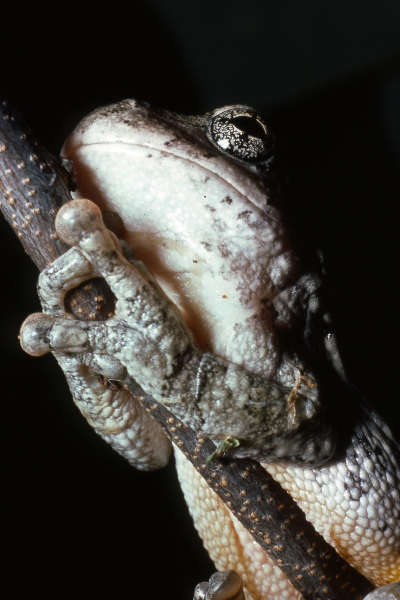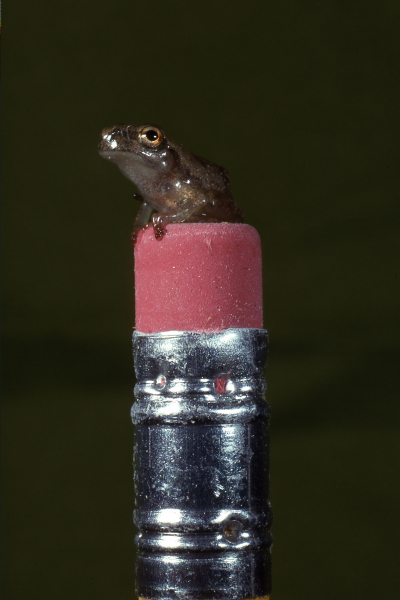 Vernal Pool Conservation And Management
Vernal Pool Conservation And Management
Value of Vernal Pools
Wetlands merit protection because they provide local communities with health and environmental benefits. Natural processes in the environment can provide these benefits for free when they are recognized and preserved. 'Ecosystem services' provided by temperate wetlands were estimated to be worth a mean annual value of $567 per hectare (Woodward and Wui 2001). Some of the benefits wetlands provide to people and wildlife include the following:
- Flood control: Wetlands reduce flooding and erosion by catching runoff and trapping water and sediments. They can help recharge the groundwater by gathering surface water and slowly releasing it to the water table.
- Water purification: Wetlands filter out pollutants that eventually enter waterways and drinking water supplies. When wetlands intercept runoff from agricultural areas, they can remove nitrates and phosphates which are leading causes of impairment of the Chesapeake Bay.
- Carbon sequestration: Greenhouse gas mitigation takes place through wetlands as they capture and store atmospheric carbon dioxide.
- Wildlife habitat: Game animals such as deer, turkey, and bears visit pools to find food and water. Bats, waterfowl, and songbirds feed on the rich insect buffet in and around vernal pools, and find sheltered areas to roost and build nests.
- Unique species: Vernal pools provide breeding and foraging habitat for a specialized group of frogs, toads, salamanders, turtles, insects, mollusks, and crustaceans. Many of these animals have unique adaptations to live in vernal pools and do not do well in permanent waters.
- Improved home value: Vernal pools can be enjoyed and promoted by informed homeowners for the environmental, aesthetic, and wildlife value they provide.

Vernal Pool Conservation
Understanding the requirements of vernal pool species throughout their life is the first step in determining how to protect them and is an area of ongoing research. From egg to larva to adult, vernal pool animals need different resources throughout their development, and these needs vary by species. For example, some species ride out the dry phase of a vernal pool as an egg. The egg must dry out and freeze before it will respond to environmental cues such as reflooding to hatch. In other species, the larva or adult waits out the dry phase in the moist soil under the leaves in the pool basin. Other species have terrestrial adults that leave the vernal pool and seek food, shelter, and overwintering sites elsewhere. Some species move into adjacent upland habitats while others move into nearby streams or permanent ponds. Adults that leave the vernal pool will need to find their way back for the next breeding season. Eighty-five percent of vernal pool amphibians return each year to breed in the same pool where they were born (Colburn, 2004). They will attempt to cross roads, developments, and other obstacles in order to return to their natal pool.
One requirement all vernal pool species have in common is that they need to find enough food in the pool. The vernal pool food web is built upon an abundance of plant material such as tree leaves, marshy vegetation, and woody debris. A healthy food web must also have balanced populations of predators and prey. Measures to control mosquitoes and other nuisance insects are often taken when developments are built near wetlands. This is necessary in some cases to protect human health. Mosquito bites are unpleasant and they can potentially spread diseases. However vernal pools may be unfairly targeted for pest control when in fact the problem lies much closer to homes than the nearby wetlands. This is a concern for vernal pool conservation because small aquatic insects like mosquito larvae are an important part of the food web. They provide an easily consumed and nutritious food source for growing amphibians and other wildlife.
Vernal pool species also share a need for resources found outside of the vernal pool. Trees and other vegetation around the pool edge shade it and keep it cool as temperatures rise in the spring and summer. They drop leaves and woody debris into the basin which feeds the smallest organisms in the food web. The uplands also provide habitat where animals can find food and shelter during the late summer and winter when the pool is dry or frozen. Vernal pool animals will travel considerable distances from the pool to find their terrestrial home. To provide for the upland needs of vernal pool species, conservation and management plans should include the following elements:
- Recognize the supporting upland habitat based on amphibian migration distances.
- Identify land use practices that would render the upland habitat unsuitable for vernal pool species.
- Identify fragmenting features that may obstruct the movement of migrating amphibians.
- Define corridors that connect vernal pools to nearby permanent wetlands and streams.
- Define corridors that connect vernal pools to nearby forest patches, especially in fragmented landscapes where pools have inadequate forested habitat surrounding them.

Vernal Pool Best Management Practices
State and federal laws regulate activities that impact vernal pool basins. However they fall short in protecting the terrestrial upland habitat that vernal pool animals use outside of the breeding season when they move into the surrounding forest. Successful protection efforts will conserve vernal pools, their supporting upland habitats, and corridors that connect vernal pools to other wetlands and water bodies. Best Management Practices (BMPs) are recommendations that can be implemented on a property to protect and enhance vernal pool habitats. BMPs can be voluntarily adopted by anyone including private landowners, businesses, municipalities, natural resource agencies, and conservation organizations.
Best management practices, zoning laws, conservation restrictions and easements, direct land acquisition, and vernal pool restoration and creation are all important tools that can be used towards their conservation.
The downloadable 'Vernal Pool Best Management Practices' document contains detailed BMPs and the reasoning behind them. A few key recommendations are summarized here.
Create a Vernal Pool Management Plan: A management plan is a helpful tool for landowners because it defines current and potential future land uses and goals. It evaluates the current condition of vernal pools on the site, and identifies best management practices that would benefit the vernal pool currently and into the future in light of how the property will be used.
Designate a No Disturbance Zone: Create a buffer to protect the core vernal pool habitat which includes the vernal pool basin and the uplands that immediately surround it. A minimum 200 foot no-disturbance zone is recommended for good quality pools in forested settings. The distance should be measured from the edge of the fully flooded pool into the upland and completely encompass the pool.
Identify the Supporting Terrestrial Habitat: This zone extends from the edge of the 200 foot no-disturbance zone an additional 800 feet into the surrounding uplands. A variety of activities in the terrestrial habitat zone are compatible with maintaining good pool quality when best management practices are utilized. For example, retain 50-75% tree canopy cover during logging and restrict activities that disturb the soil to the months of November through January when vernal pool amphibians are not active on the ground surface.
Identify Sites for Vernal Pool Restoration or Creation: Over half of all wetland habitats that historically occurred in Pennsylvania have been filled (Myers et al. 2000). In the right situations, restoring and creating new vernal pools can help turn the tide against the loss of wetlands that has occurred over the past decades.






